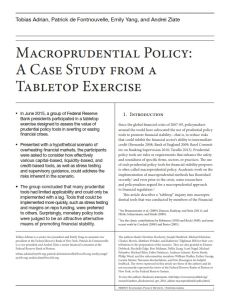Join getAbstract to access the summary!

Join getAbstract to access the summary!
Tobias Adrian, Patrick de Fontnouvelle, Emily Yang and Andrei Zlate
Macroprudential Policy
A Case Study from a Tabletop Exercise
New York Fed, 2016
What's inside?
Macroprudential policy tools to steady markets under financial duress may be critical in the next crisis.
Recommendation
In the wake of the 2008 financial crisis, the US Federal Reserve has looked at using macroprudential tools – regulatory and rule-based actions, distinct from traditional monetary policy – to mitigate systemic risk in future financial disruptions. In this high-level examination of macroprudential applications, central bankers Tobias Adrian, Patrick de Fontnouvelle, Emily Yang and Andrei Zlate examine how and why the levers would work during a potential risk event. getAbstract recommends their comprehensive, esoteric insider’s report to central bankers, policy makers and financial professionals.
Summary
About the Authors
Tobias Adrian is a senior vice president and Emily Yang is an assistant vice president at the Federal Reserve Bank of New York. Patrick de Fontnouvelle is a vice president and Andrei Zlate is a senior financial economist at the Federal Reserve Bank of Boston.




















Comment on this summary